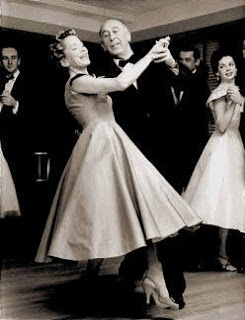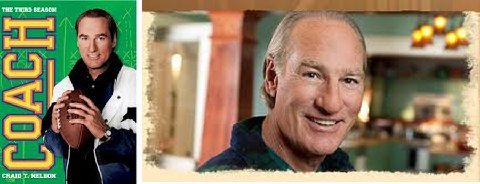Texas (/ˈtɛksəs/ TEK-səss, locally also /ˈtɛksɪz/ TEK-siz; Spanish: Texas or Tejas, pronounced [ˈtexas]) is the most populous state in the South Central region of the United States. It borders Louisiana to the east, Arkansas to the northeast, Oklahoma to the north, New Mexico to the west, and the Mexican states of Chihuahua, Coahuila, Nuevo León, and Tamaulipas to the south and southwest. Texas has a coastline on the Gulf of Mexico to the southeast. Covering 268,596 square miles, and with over 30 million residents as of 2023, it is the second-largest U.S. state by both area and population.
Texas is nicknamed the Lone Star State for its former status as an independent republic. The Lone Star can be found on the Texas state flag and the Texas state seal. Spain was the first European country to claim and control the area of Texas. Following a short-lived colony controlled by France, Mexico controlled the territory until 1836 when Texas won its independence, becoming the Republic of Texas. In 1845, Texas joined the United States as the 28th state.[14] The state's annexation set off a chain of events that led to the Mexican–American War in 1846. Following victory by the United States, Texas remained a slave state until the American Civil War, when it declared its secession from the Union in early 1861 before officially joining the Confederate States of America on March 2. After the Civil War and the restoration of its representation in the federal government, Texas entered a long period of economic stagnation.
Historically, four major industries shaped the Texas economy prior to World War II: cattle and bison, cotton, timber, and oil. Before and after the Civil War, the cattle industry—which Texas came to dominate—was a major economic driver and created the traditional image of the Texas cowboy. In the later 19th century, cotton and lumber grew to be major industries as the cattle industry became less lucrative. Ultimately, the discovery of major petroleum deposits (Spindletop in particular) initiated an economic boom that became the driving force behind the economy for much of the 20th century. Texas developed a diversified economy and high tech industry during the mid-20th century. As of 2022, it has the most Fortune 500 company headquarters (53) in the United States. With a growing base of industry, the state leads in many industries, including tourism, agriculture, petrochemicals, energy, computers and electronics, aerospace, and biomedical sciences. Texas has led the U.S. in state export revenue since 2002 and has the second-highest gross state product.
The Dallas–Fort Worth metroplex and Greater Houston areas are the nation's fourth and fifth-most populous urban regions respectively. Its capital city is Austin. Due to its size and geologic features such as the Balcones Fault, Texas contains diverse landscapes common to both the U.S. Southern and the Southwestern regions. Most population centers are in areas of former prairies, grasslands, forests, and the coastline. Traveling from east to west, terrain ranges from coastal swamps and piney woods, to rolling plains and rugged hills, to the desert and mountains of the Big Bend.
Etymology
The name Texas, based on the Caddo word táy:shaʼ (/tə́jːʃaʔ/) 'friend', was applied, in the spelling Tejas or Texas, by the Spanish to the Caddo themselves, specifically the Hasinai Confederacy.
Statehood
Texas was finally annexed when the expansionist James K. Polk won the election of 1844. On December 29, 1845, the U.S. Congress admitted Texas to the U.S. After Texas's annexation, Mexico broke diplomatic relations with the United States. While the United States claimed Texas's border stretched to the Rio Grande, Mexico claimed it was the Nueces River leaving the Rio Grande Valley under contested Texan sovereignty. While the former Republic of Texas could not enforce its border claims, the United States had the military strength and the political will to do so. President Polk ordered General Zachary Taylor south to the Rio Grande on January 13, 1846. A few months later Mexican troops routed an American cavalry patrol in the disputed area in the Thornton Affair starting the Mexican–American War. The first battles of the war were fought in Texas: the Siege of Fort Texas, Battle of Palo Alto and Battle of Resaca de la Palma. After these decisive victories, the United States invaded Mexican territory, ending the fighting in Texas.
Wildlife
Texas is the home to 65 species of mammals, 213 species of reptiles and amphibians, including the American green tree frog, and the greatest diversity of bird life in the United States—590 native species in all. At least 12 species have been introduced and now reproduce freely in Texas.
Texas plays host to several species of wasps, including an abundance of Polistes exclamans, and is an important ground for the study of Polistes annularis.
During the spring Texas wildflowers such as the state flower, the bluebonnet, line highways throughout Texas. During the Johnson Administration the first lady, Lady Bird Johnson, worked to draw attention to Texas wildflowers.
If you want to read a whole lot more, go here: https://en.wikipedia.org/wiki/Texas
- SERVES
- 2
- COOK TIME
- 20 Min
We dip salmon in butter and then coat it with seasoned potato flakes to make our delicious Potato-Crusted Salmon. It's so easy to do, and the crunchy coating really makes this salmon taste extra-special.
- 1/3 cup instant mashed potato flakes
- 1/4 teaspoon onion powder
- 1/4 teaspoon salt
- 1/4 teaspoon black pepper
- 2 (6-ounce) frozen salmon fillets, thawed, skin removed
- 1/4 cup (1/2 stick) butter, melted
- Preheat oven to 350º. Coat a 7- x 11-inch baking dish with cooking spray.
- In a shallow dish, combine potato flakes, onion powder, salt, and pepper; mix well. Dip fillets in melted butter then coat with potato mixture; place in prepared baking dish. Sprinkle any remaining potato mixture evenly over the top. Drizzle remaining butter over the fillets.
- Bake 20 to 25 minutes, or until fish flakes easily with a fork and potato crust is golden. Serve immediately.
1895 – Arthur Murray, American dance teacher (d. 1991)
1932 – Anthony Perkins, American actor (d. 1992)
.... Died from AIDS, but was married to Berry, a female, who died in one of the 9-11 plane crashes. He had two children.
Dude............comb thy locks!













No comments:
Post a Comment